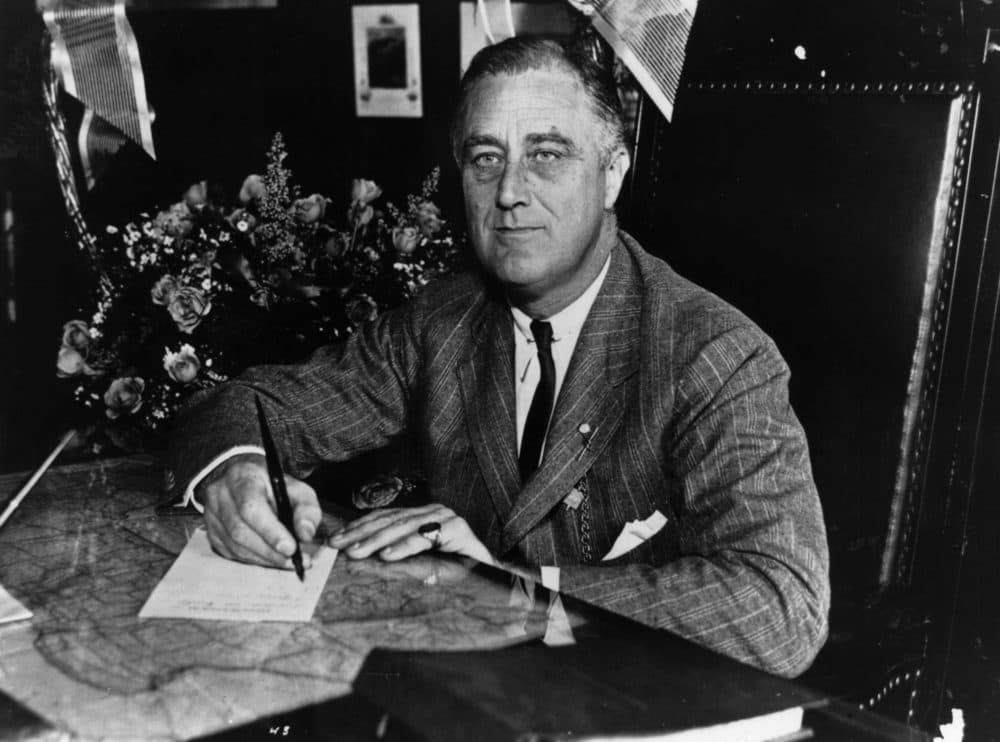The New Deal: Fighting Depression with Bold Ideas

From 1933 to 1941, Roosevelt introduced a series of groundbreaking programs aimed at stabilizing the economy, creating jobs, and restoring public confidence.
The Dive
By 1933, America was spiraling. Nearly a quarter of the workforce was unemployed. Banks were collapsing. Soup kitchens lined city blocks. Into this chaos stepped Franklin D. Roosevelt, newly elected with a promise: 'The only thing we have to fear is fear itself.'
Roosevelt acted fast. Within days of taking office, he declared a national 'bank holiday' to stop the financial freefall and signed the Emergency Banking Act. Through his first 'Fireside Chat'—a radio address to reassure Americans—he explained his plan in plainspoken language. Confidence slowly returned.
The first 100 days of FDR’s presidency were a legislative blitz. Congress passed laws to regulate Wall Street (SEC), provide jobs (CCC and PWA), reform agriculture (AAA), and offer mortgage relief (HOLC). This rapid action marked a new era of government-led recovery.
One of the boldest experiments was the Tennessee Valley Authority (TVA), which brought electricity and flood control to one of the country’s poorest regions. It was a radical example of government reshaping infrastructure to lift up everyday people.
The National Industrial Recovery Act (NIRA) gave workers the right to unionize and established fair labor standards. For the first time, the federal government was stepping in to level the playing field between workers and corporations.
Despite this whirlwind of reform, the Depression persisted. So Roosevelt doubled down. In 1935, he launched the 'Second New Deal.' The Works Progress Administration (WPA) became the largest employer in the country—building roads, schools, post offices, and even hiring artists and writers.
That same year, FDR signed the Social Security Act, creating retirement pensions, unemployment insurance, and aid for the disabled. It was a massive step toward a federal safety net that still anchors American society today.
Labor rights gained even more ground with the Wagner Act, which protected unions from employer retaliation and ensured collective bargaining. Millions joined unions, and worker strikes surged nationwide.
Not everyone was a fan. The Supreme Court struck down several New Deal programs, calling them unconstitutional. FDR responded with a controversial 'court-packing' plan to add justices who would support his agenda. Though unpopular, the plan pushed the Court to start upholding key programs.
By 1937, with signs of recovery, the government cut spending—and the economy sank into a recession again. It was a hard lesson: stimulus worked, but recovery needed sustained support.
Then came World War II. The war effort finally ended the Depression by boosting industrial production and job creation. But the New Deal had already reshaped expectations: Americans now looked to the federal government to protect their economic security.
Beyond jobs and programs, the New Deal rewired political coalitions. FDR united laborers, Black voters, white Southerners, and progressive intellectuals under a new Democratic banner. And his Fireside Chats showed the power of communication in leadership—offering calm in a storm of uncertainty.
Why It Matters
The New Deal changed the way Americans think about government—not as a distant power, but as a lifeline in times of crisis. It introduced safety nets like Social Security, gave workers new rights, and made economic fairness a national priority. Understanding the New Deal means understanding the foundation of modern American governance—and why debates about the size and scope of government are still with us today.
?
Why did Roosevelt’s 'First 100 Days' set a new standard for presidential action?
How did New Deal programs like the WPA and TVA help communities directly?
What were the arguments for and against Roosevelt’s 'court-packing' plan?
In what ways did the New Deal empower workers and reshape labor relations?
How does Social Security today reflect the original intent of the 1935 law?
Dig Deeper
Historian Meg Jacobs explains how the New Deal transformed America's relationship to government—and what lessons it holds for today.
This fast-paced overview breaks down the causes of the Great Depression and how the New Deal attempted to fix them.
Related

The Great Depression: America in Crisis
The Great Depression was more than a stock market crash — it was a decade-long test of American resilience that reshaped the nation's economy, politics, and daily life.

The Dust Bowl and the Price of Plowed Dreams
On May 11, 1934, a dust storm two miles high turned daylight into darkness and carried America’s soil into the Atlantic Ocean. But this wasn’t just a weather event—it was the collapse of a dangerous illusion.

The Great Society: Government as a Force for Good
The Great Society wasn’t just a policy agenda, it was a radical vision of what America could be. With sweeping reforms in health care, education, civil rights, immigration, and the environment, President Johnson’s plan aimed to eliminate poverty and racial injustice once and for all.
Further Reading
Stay curious!
